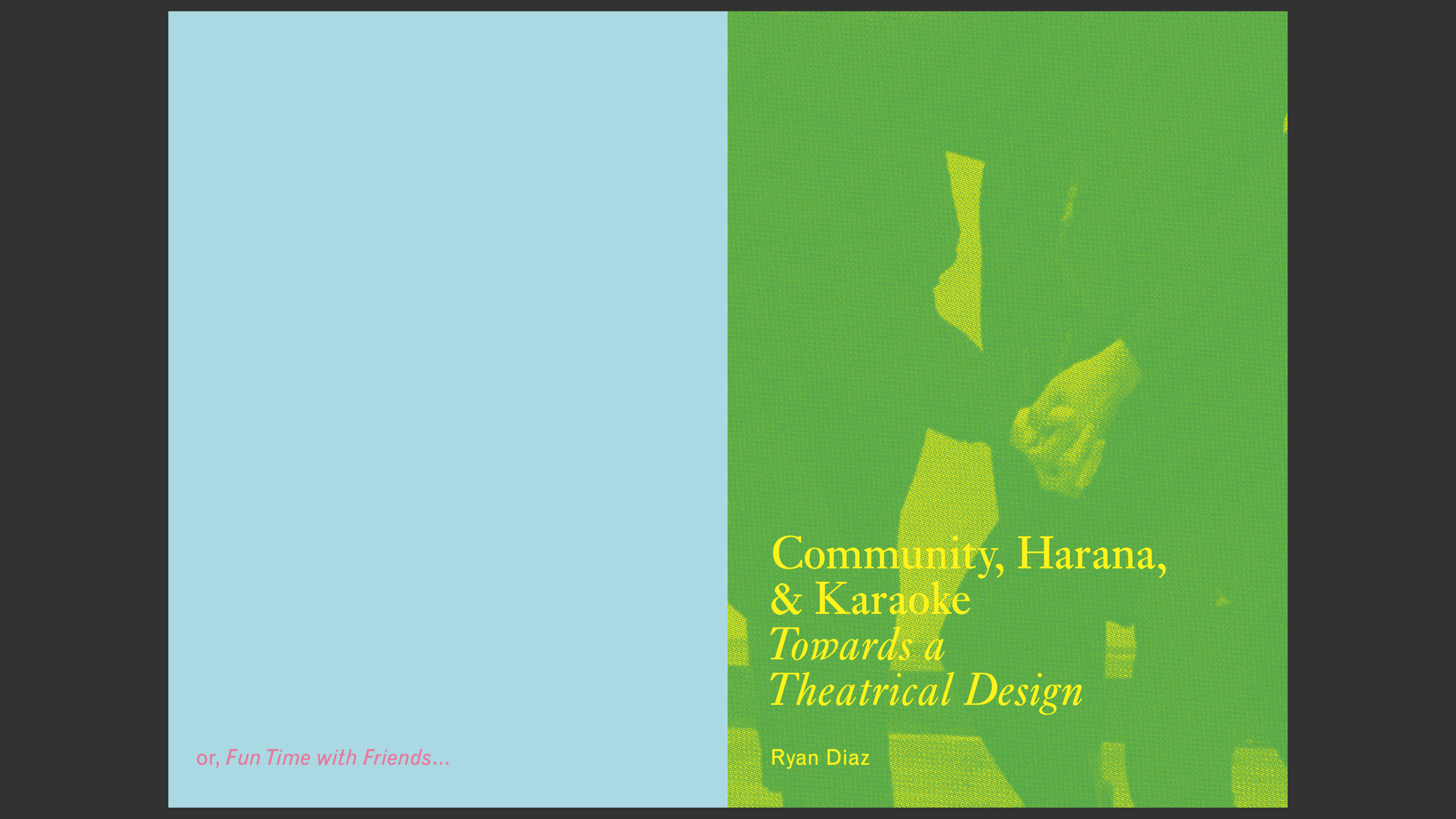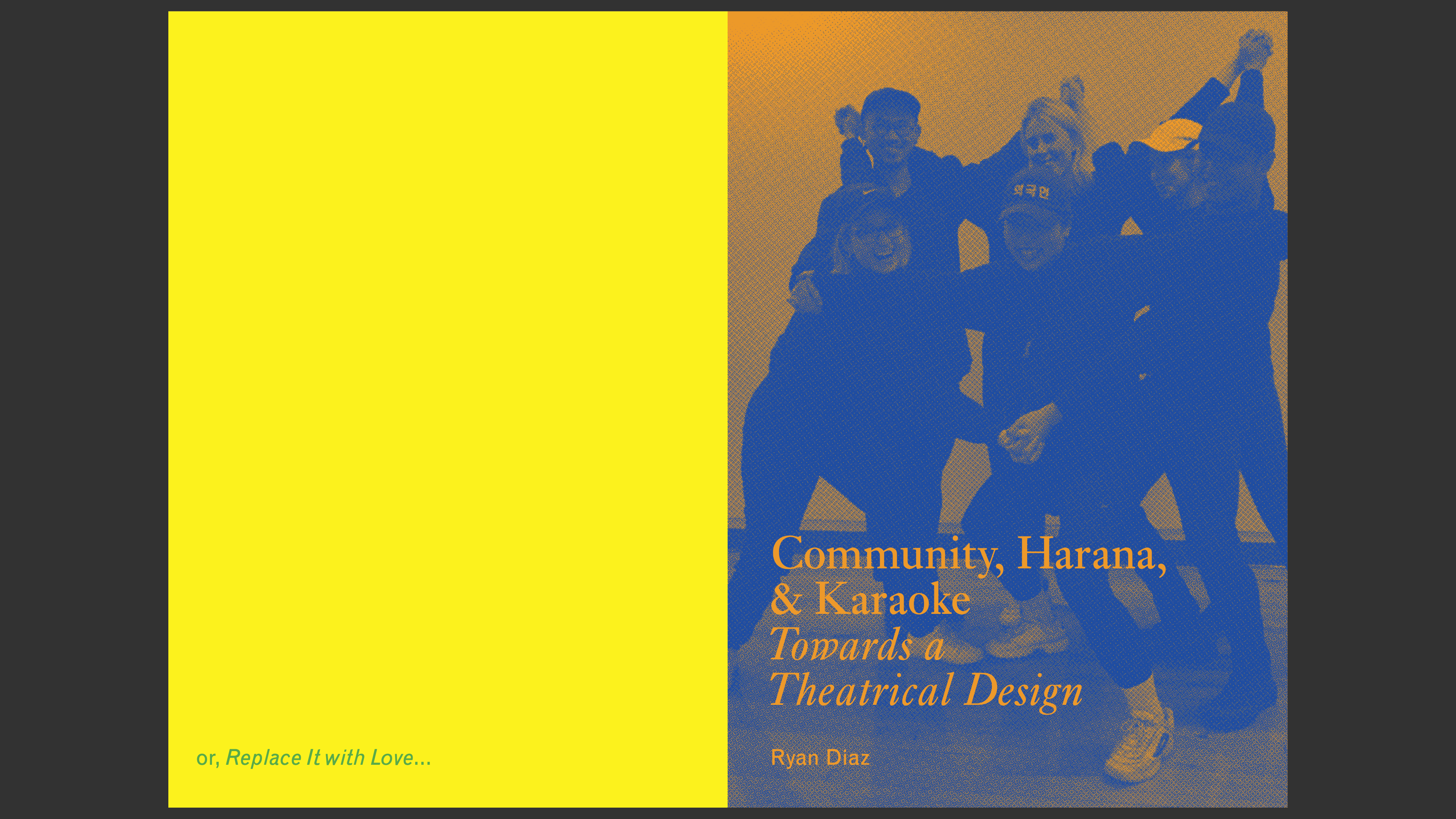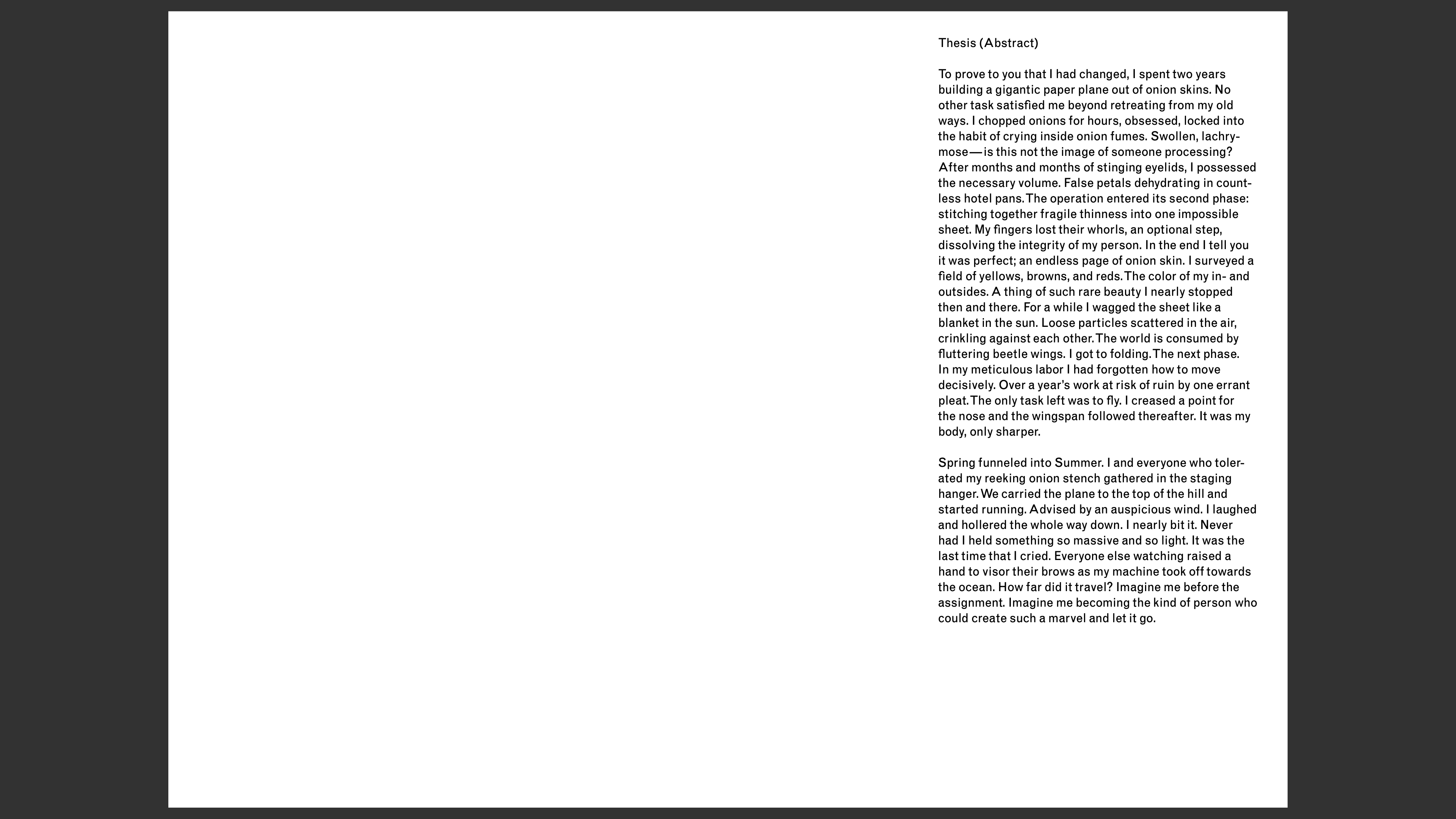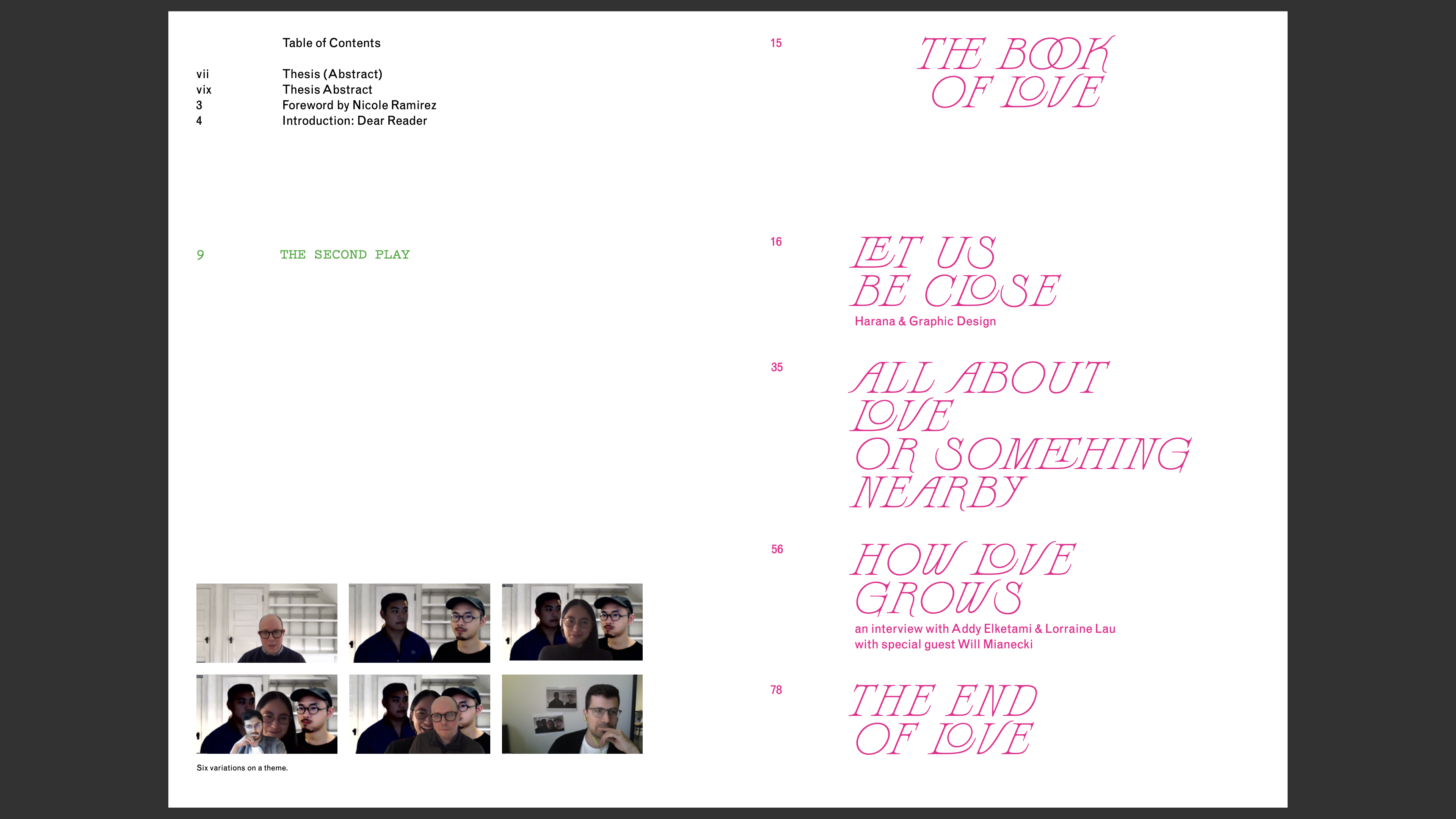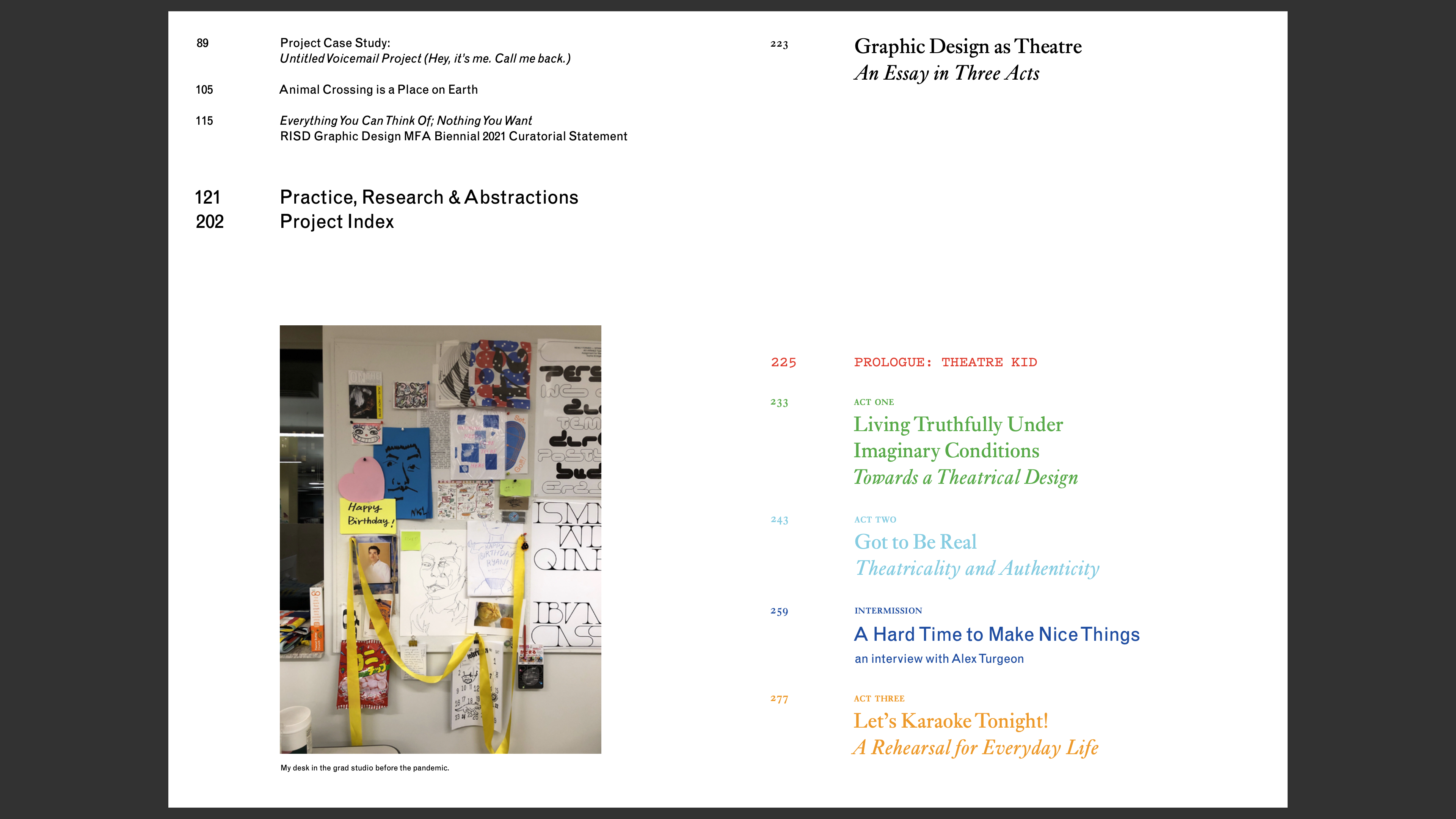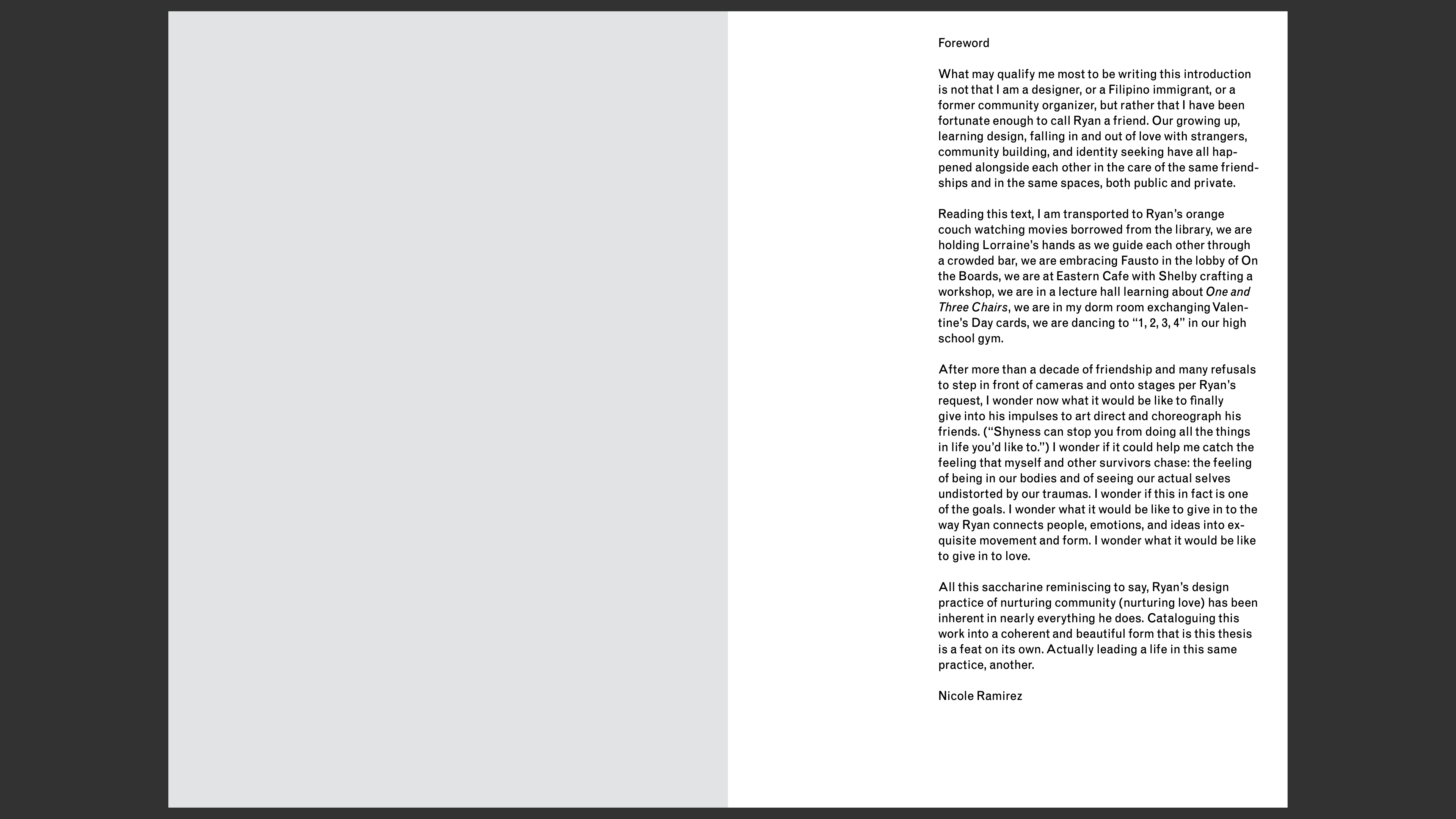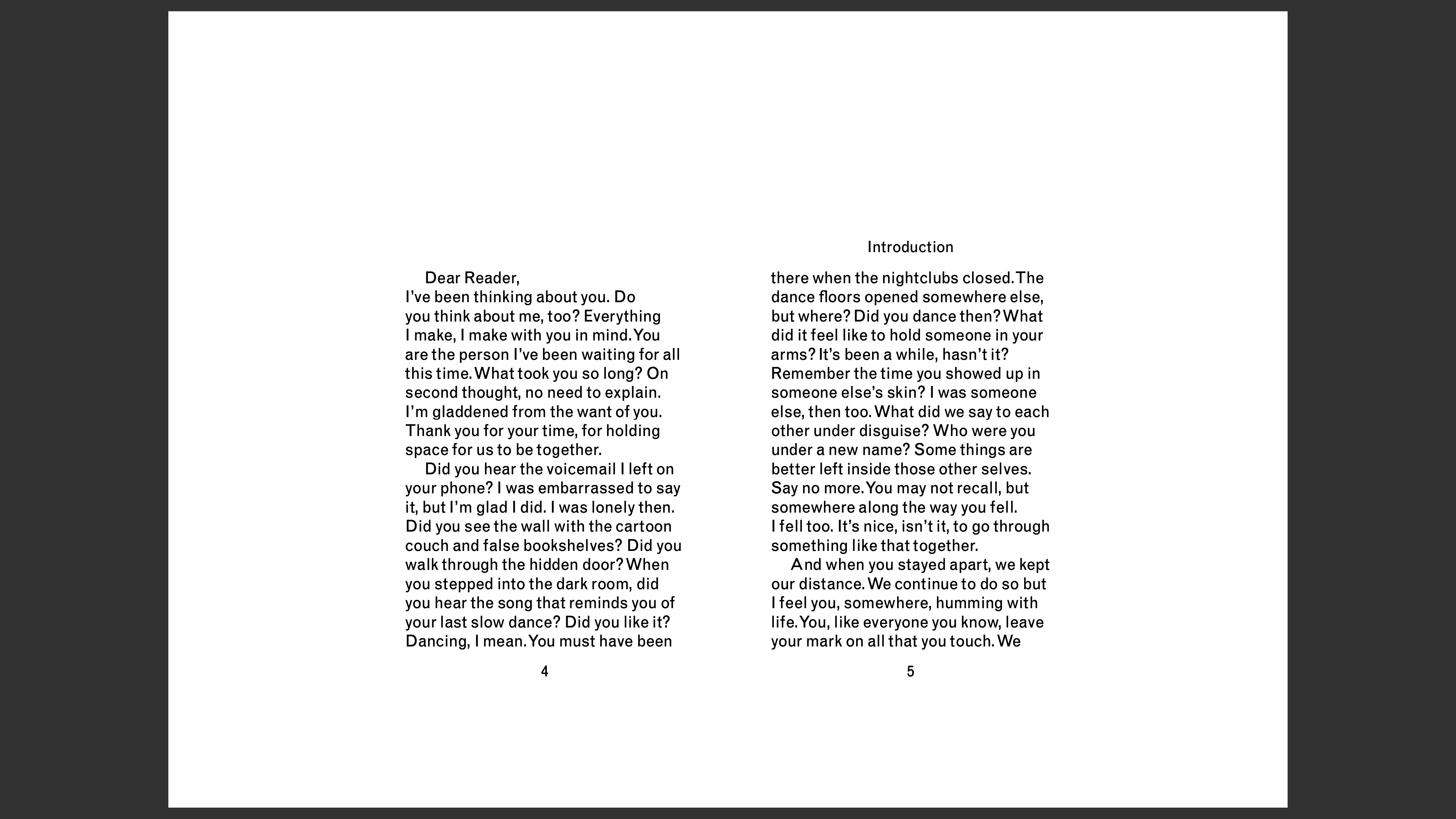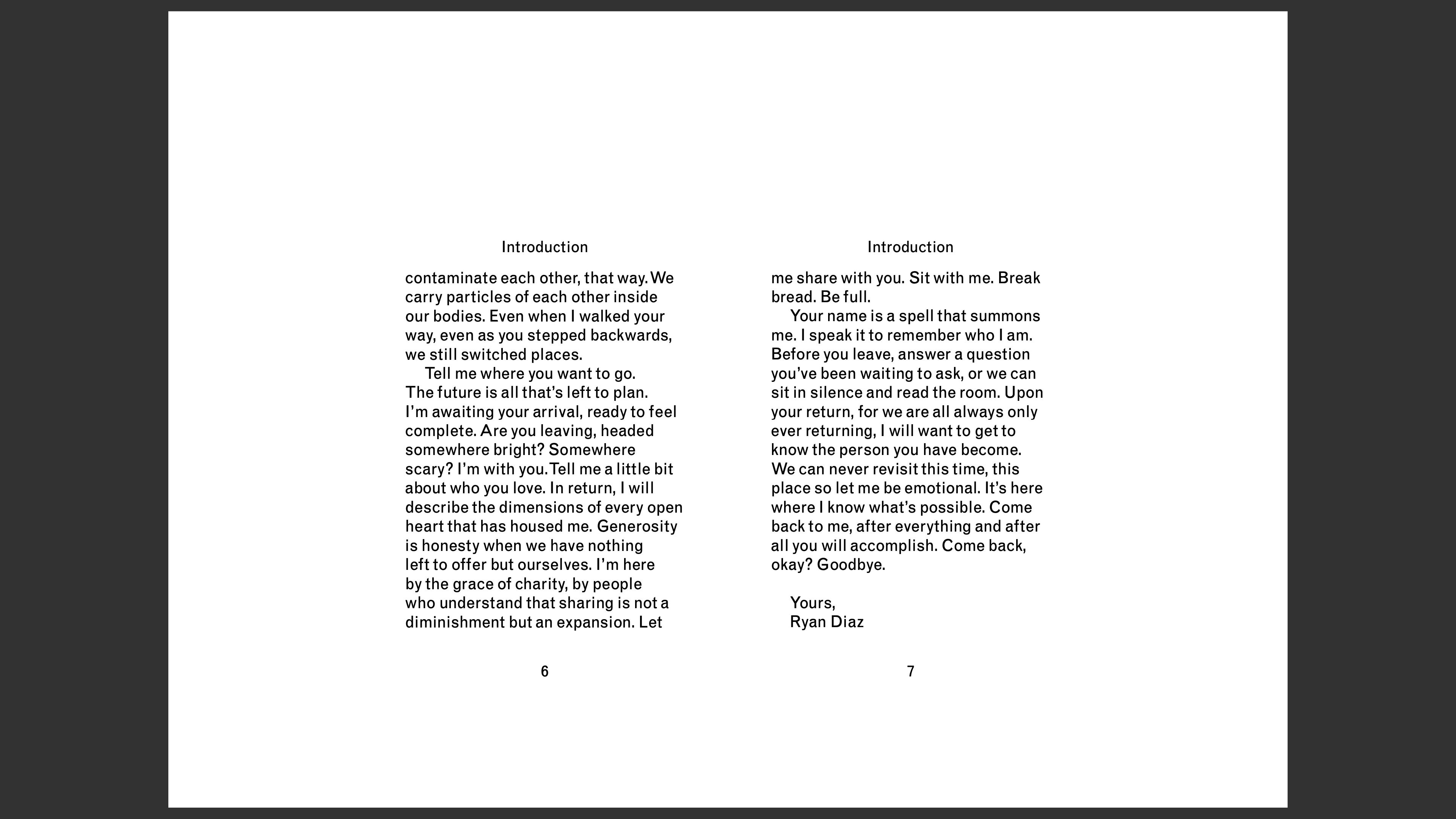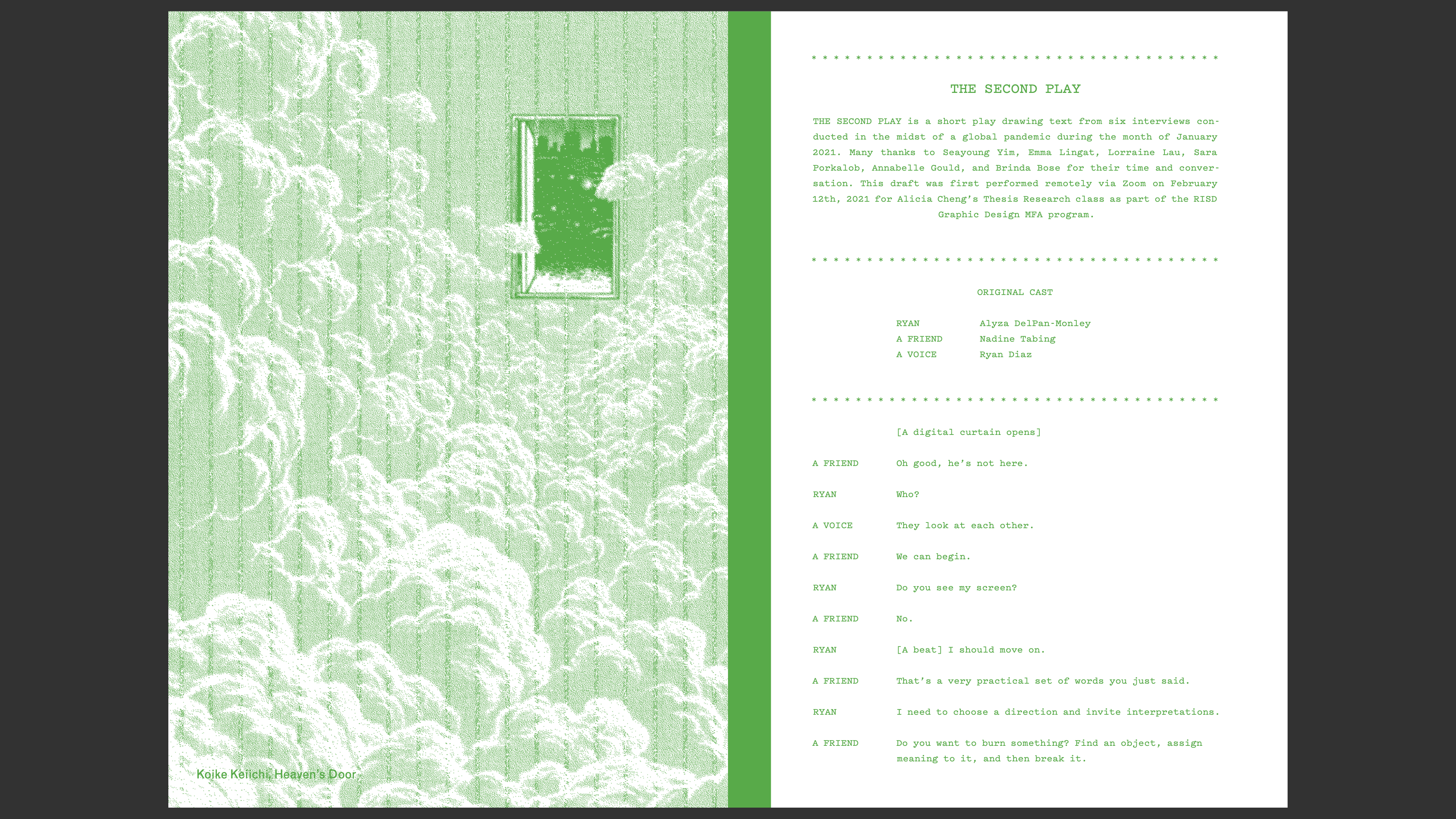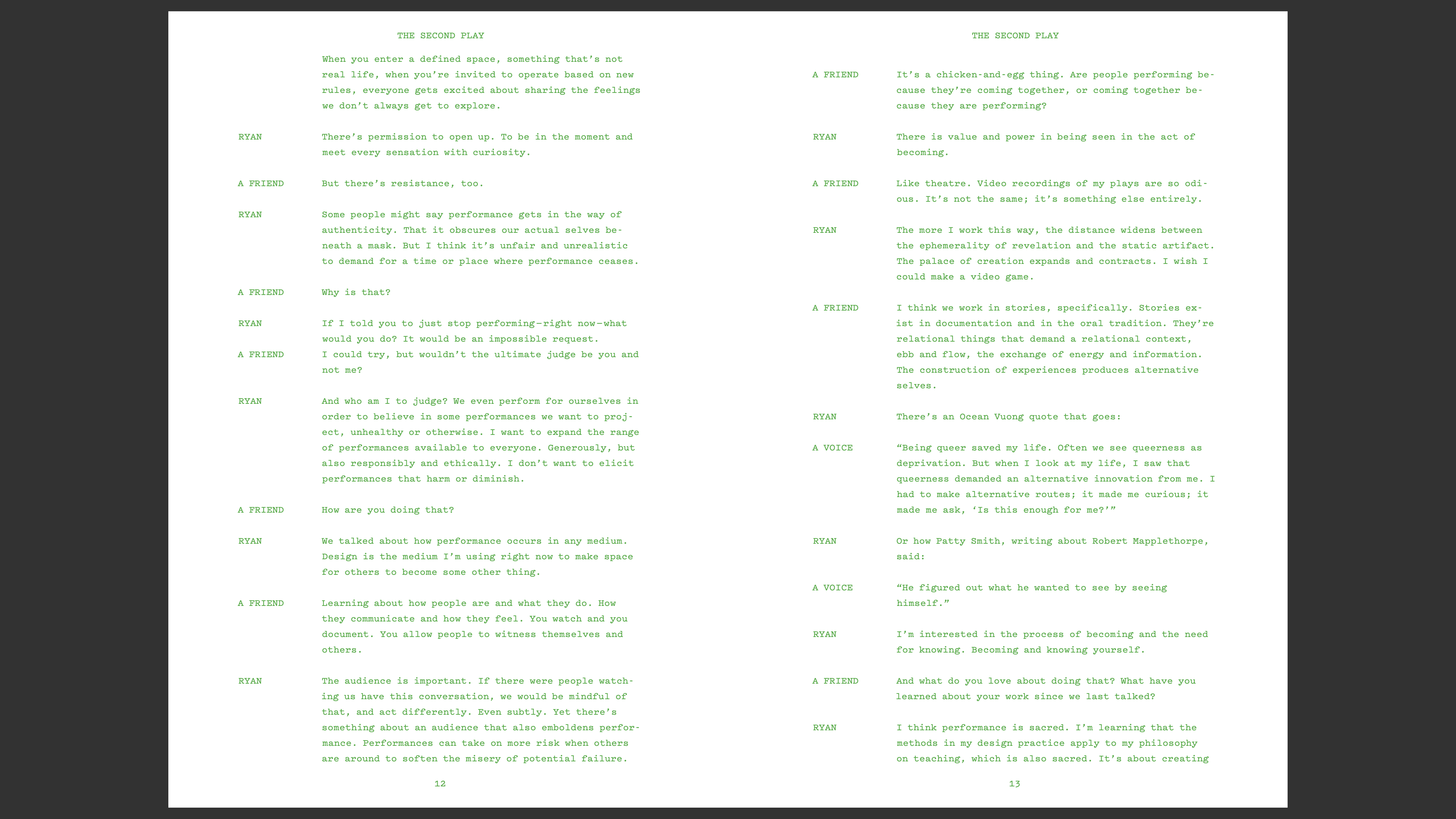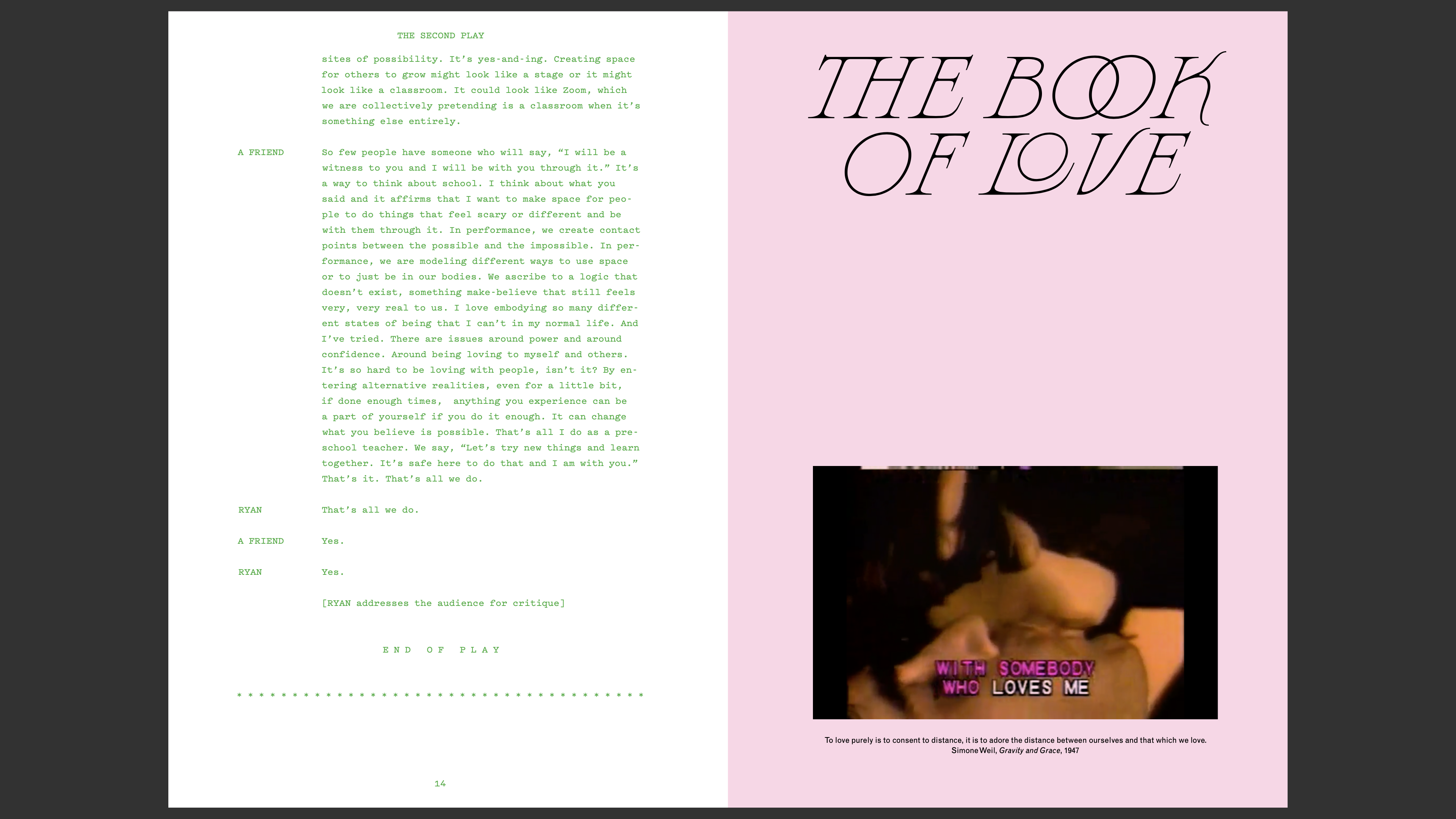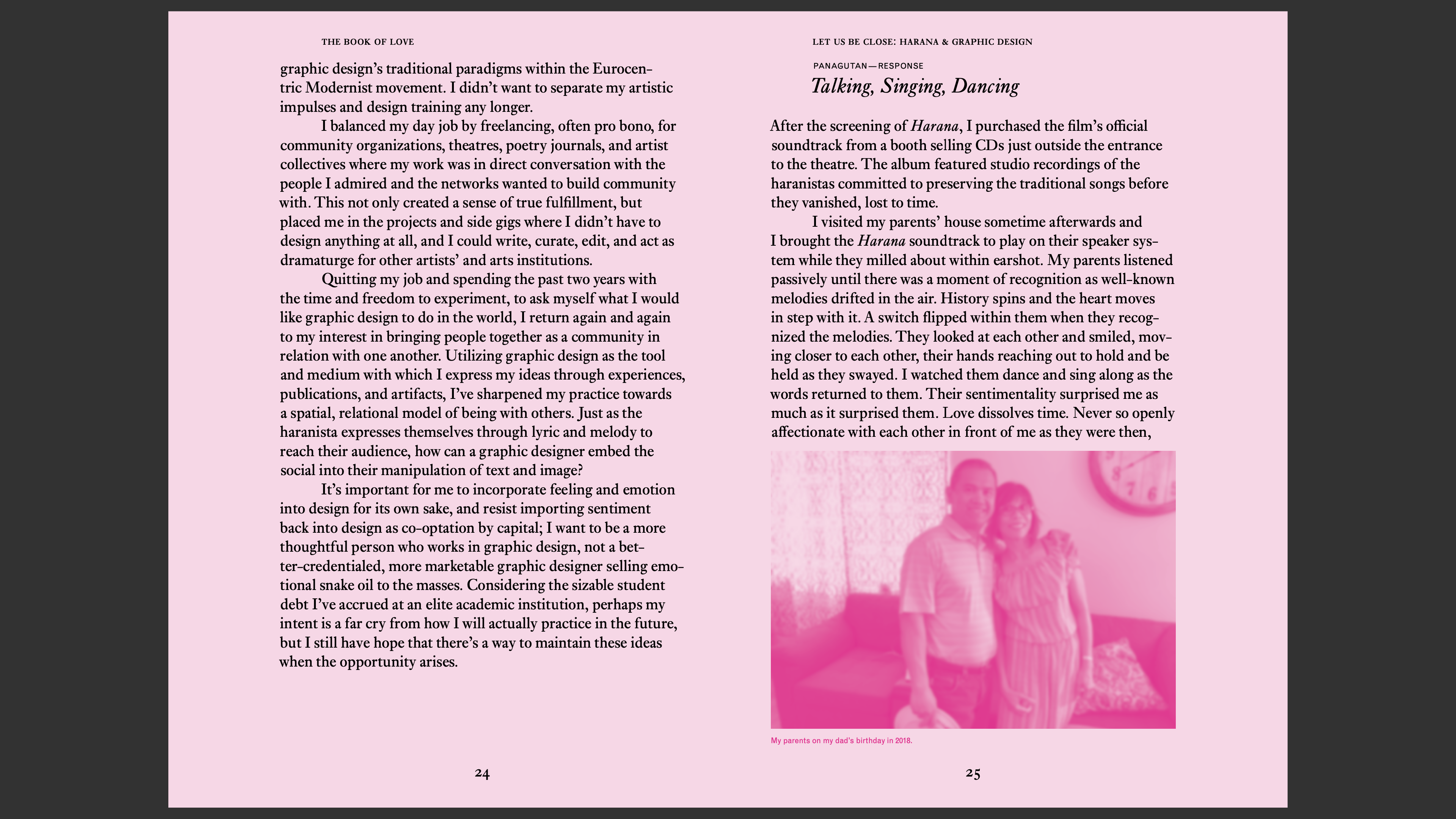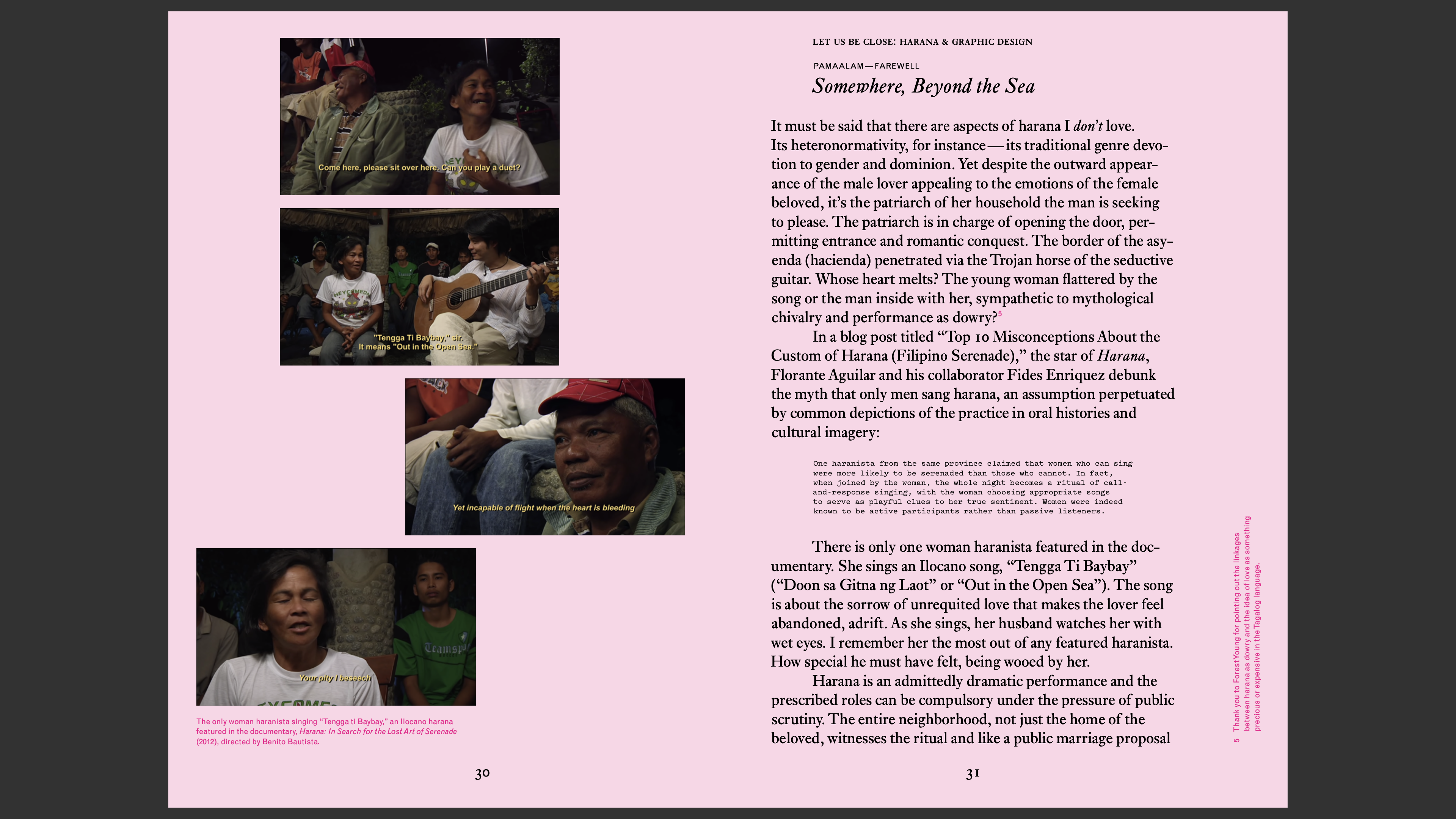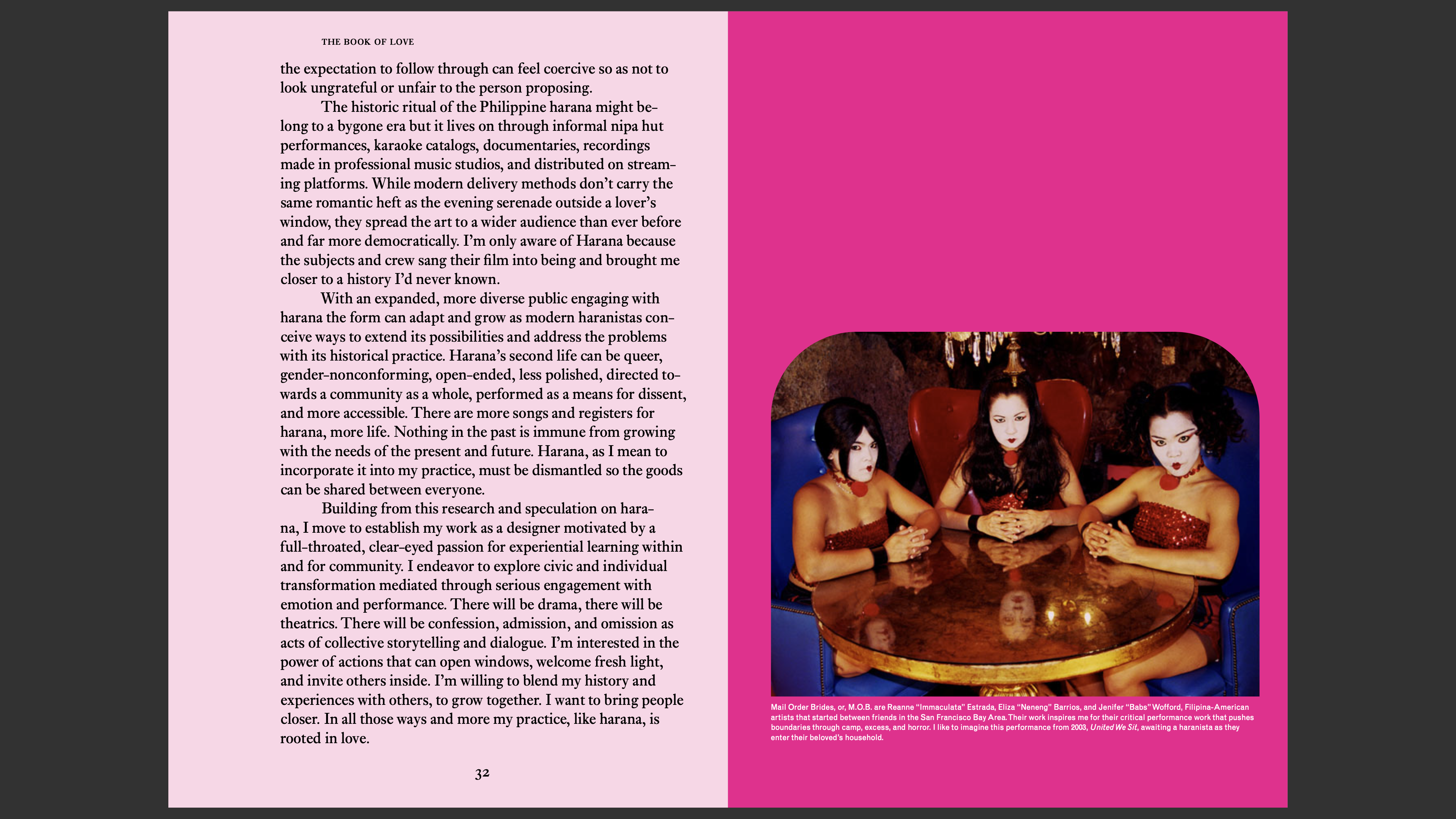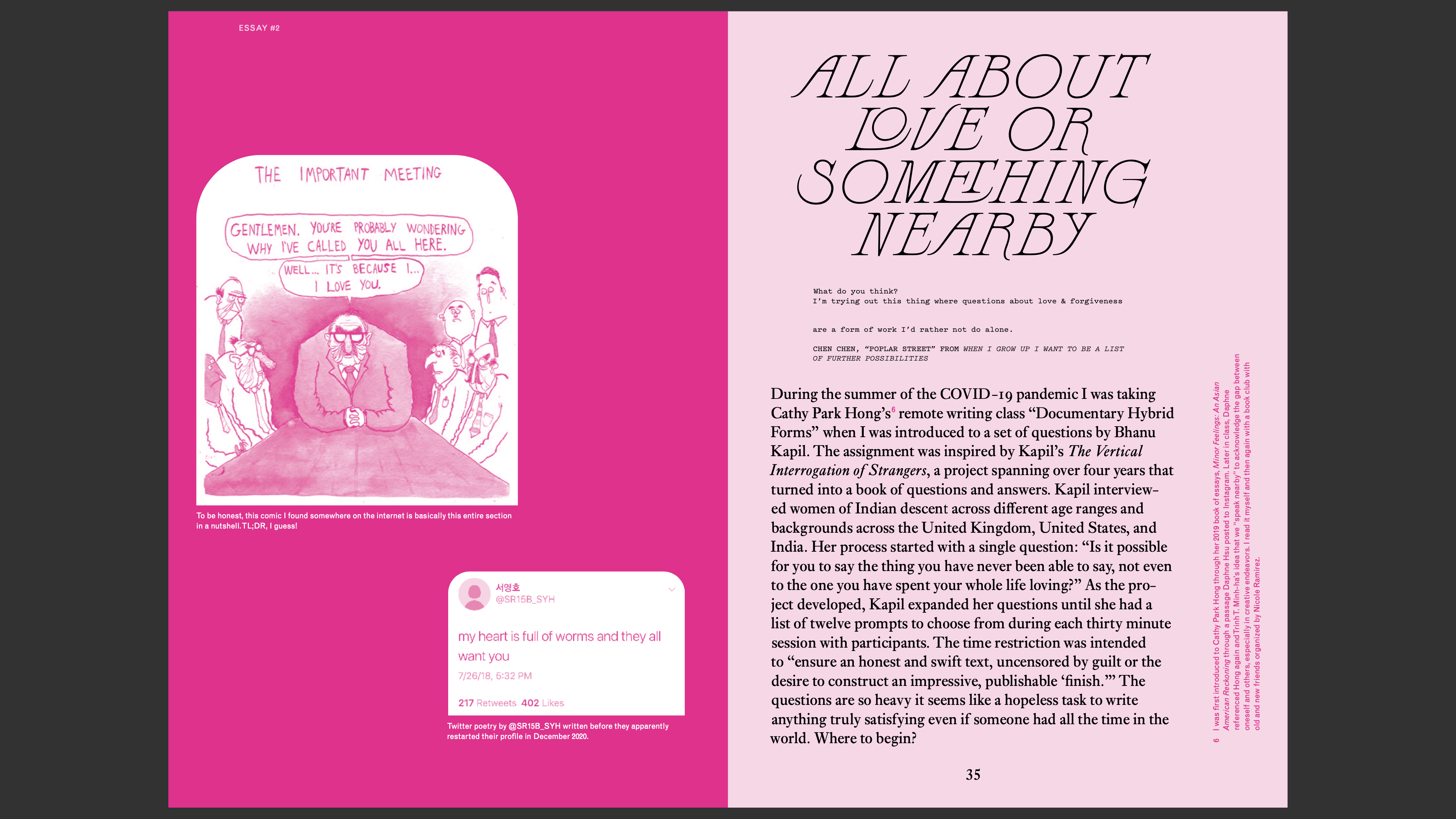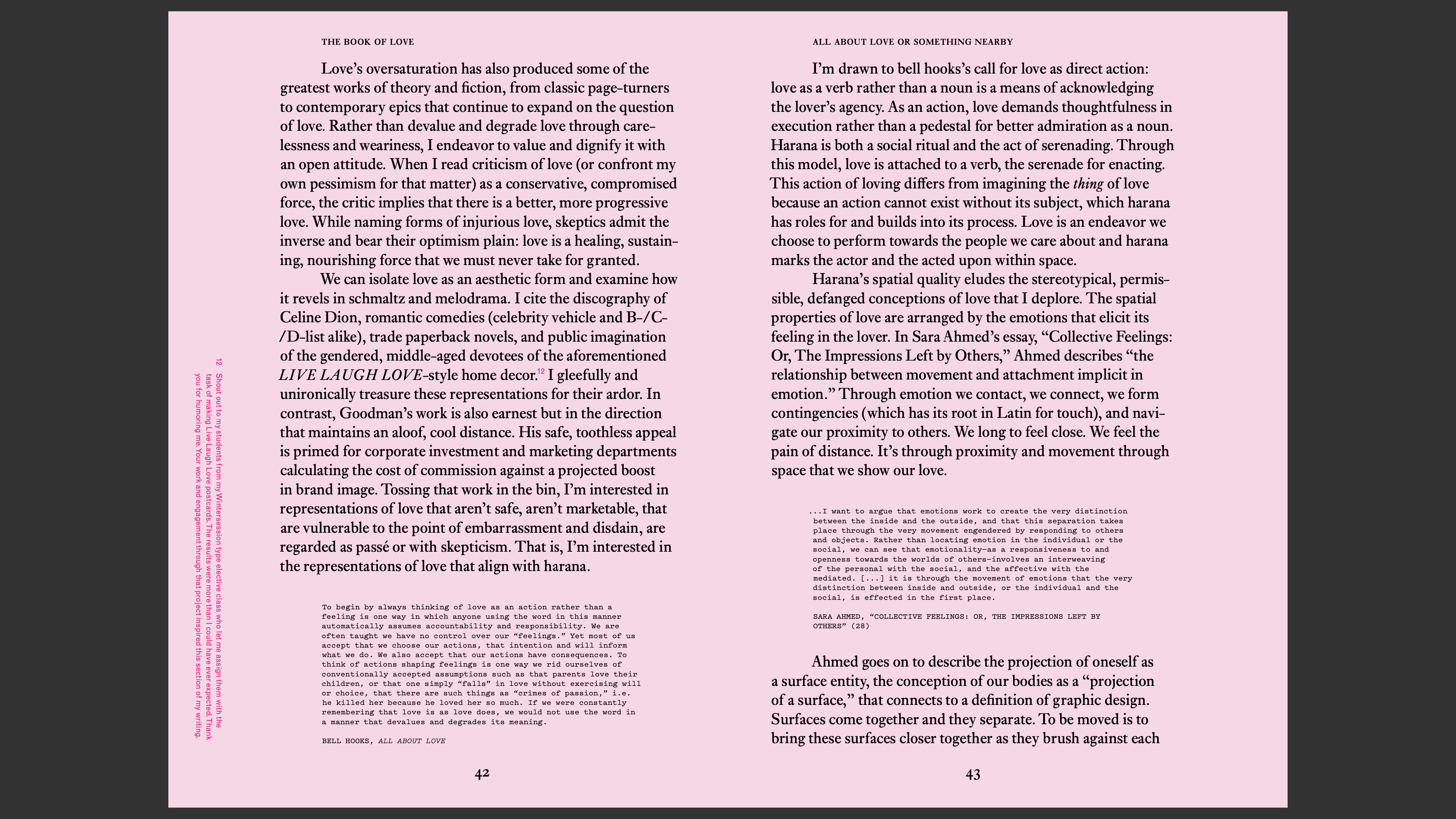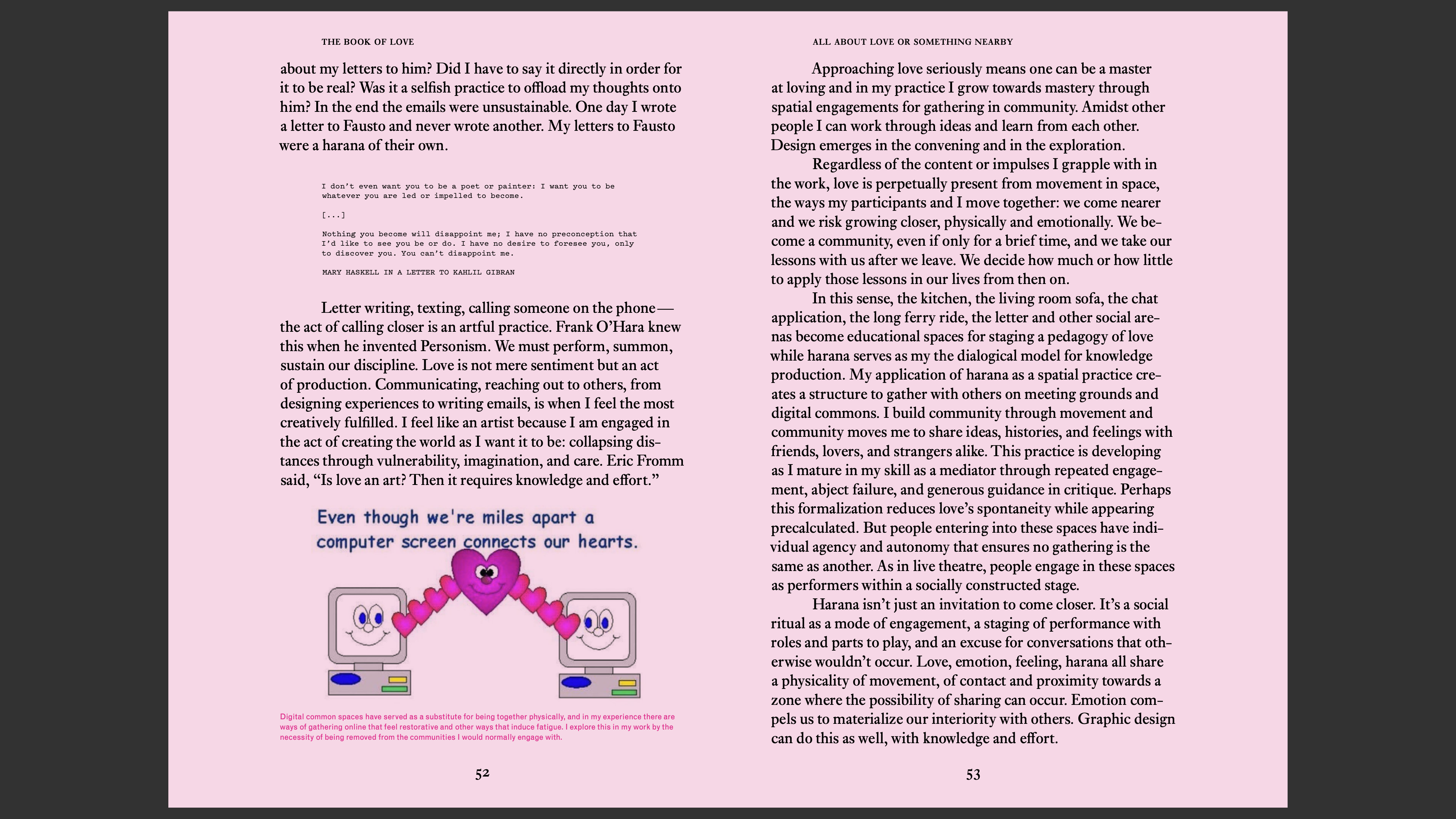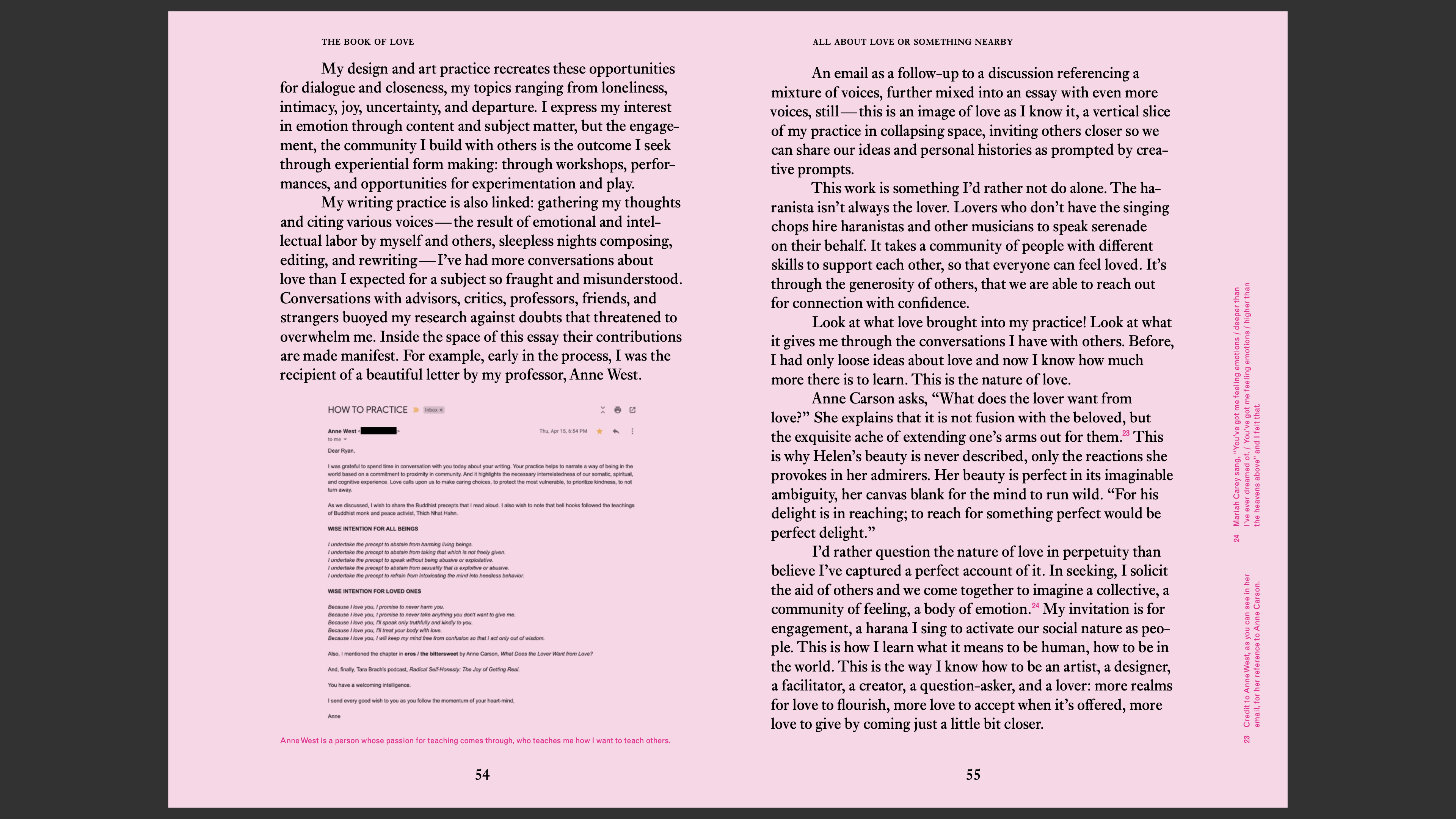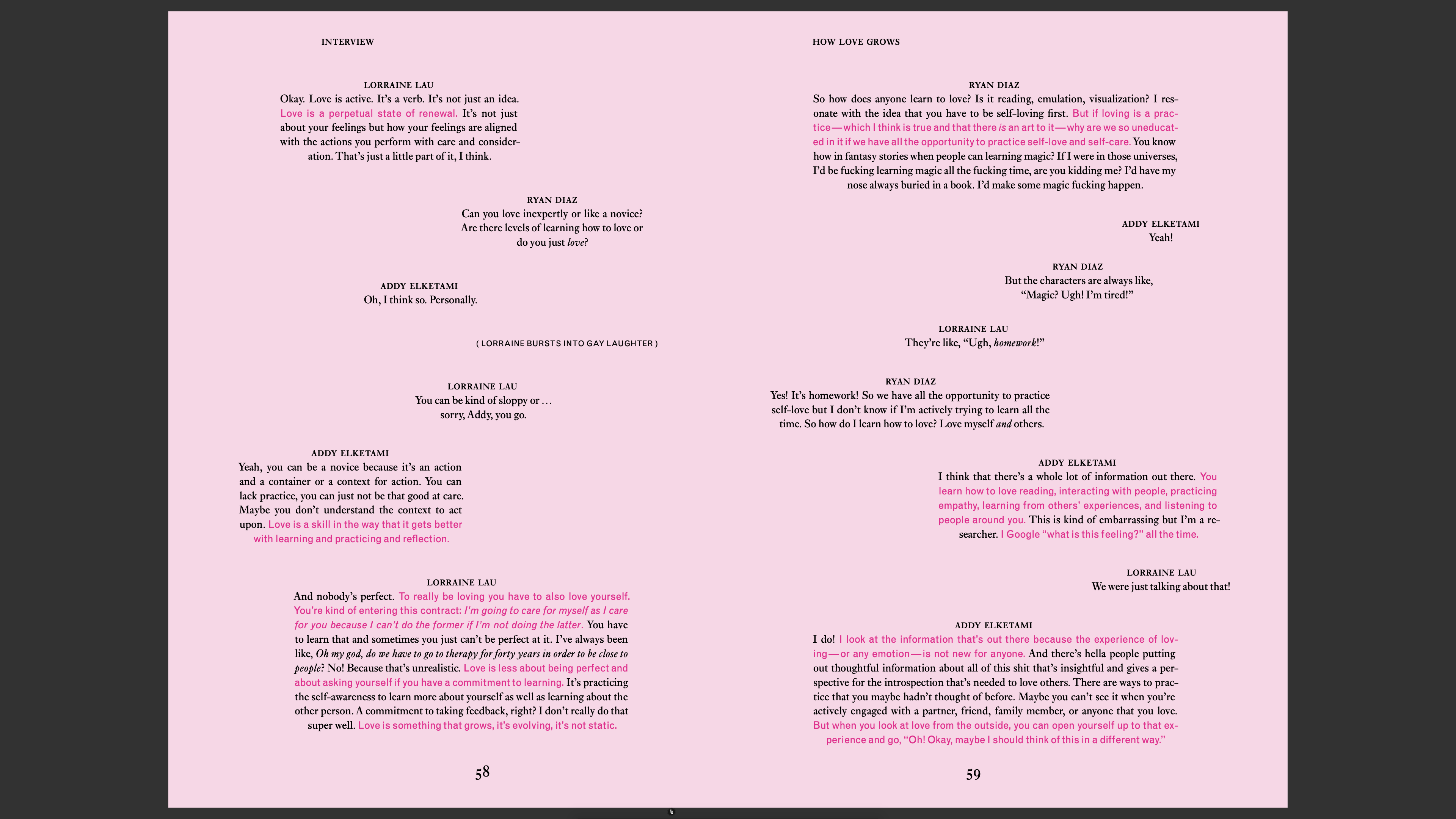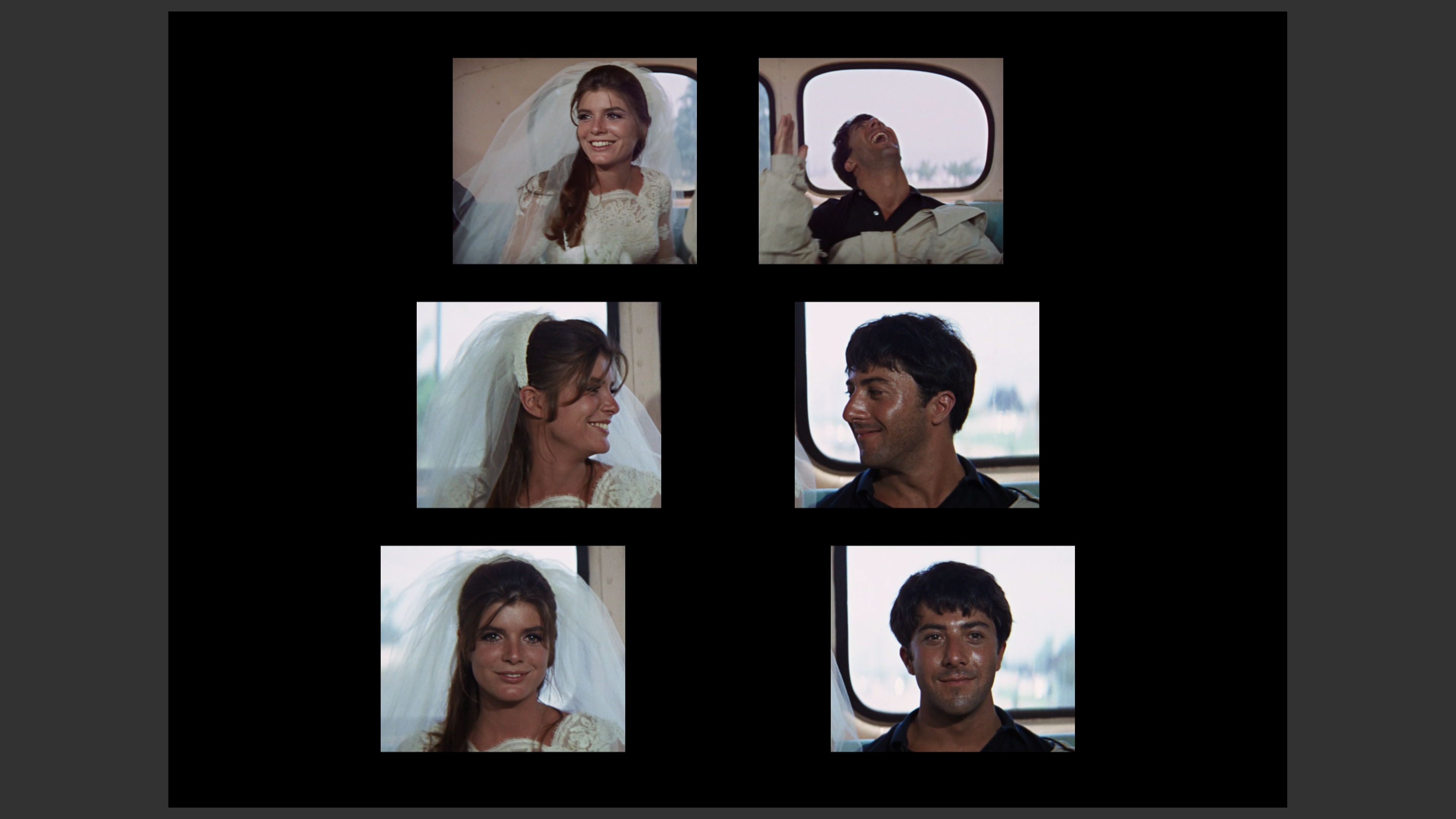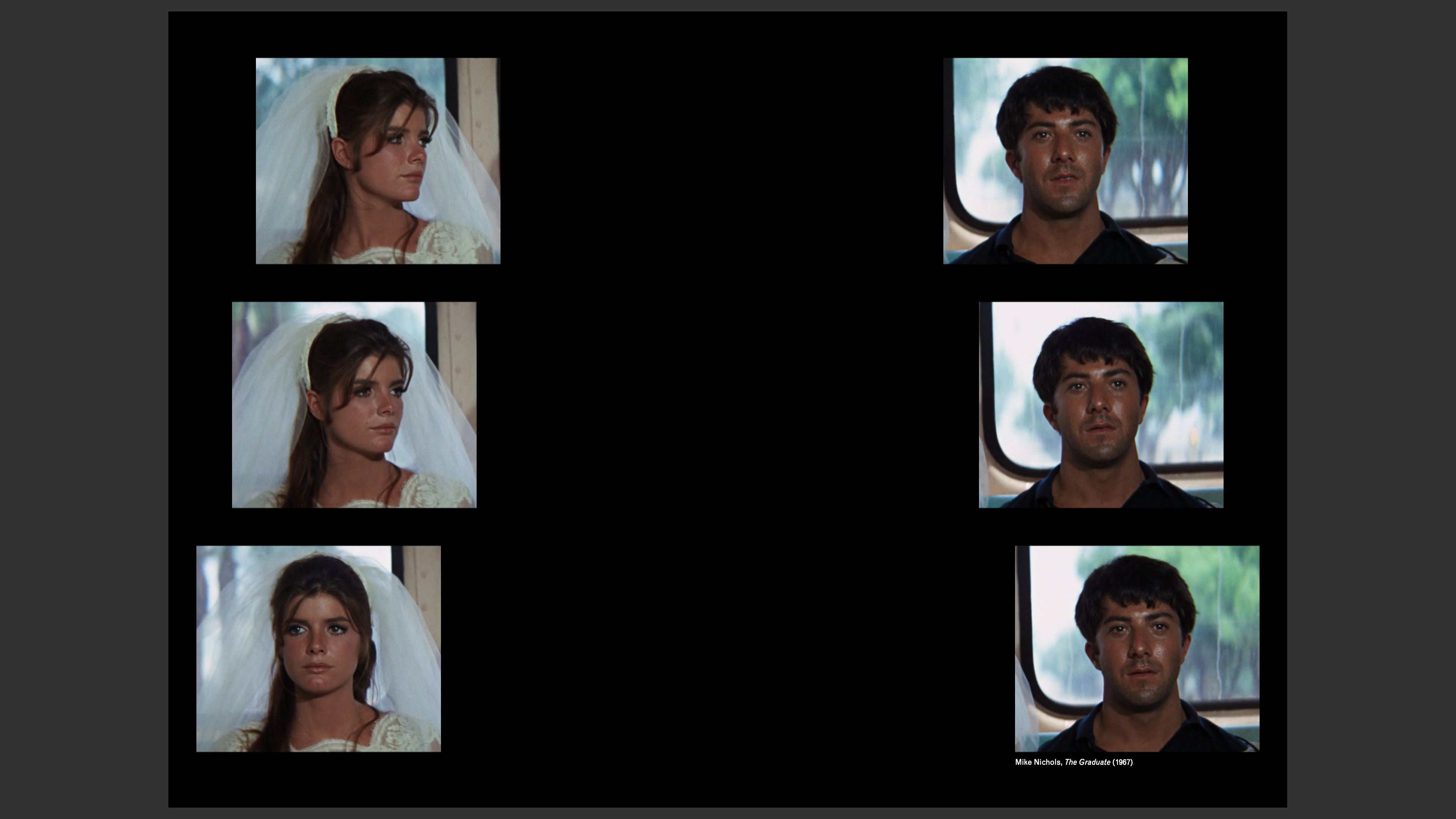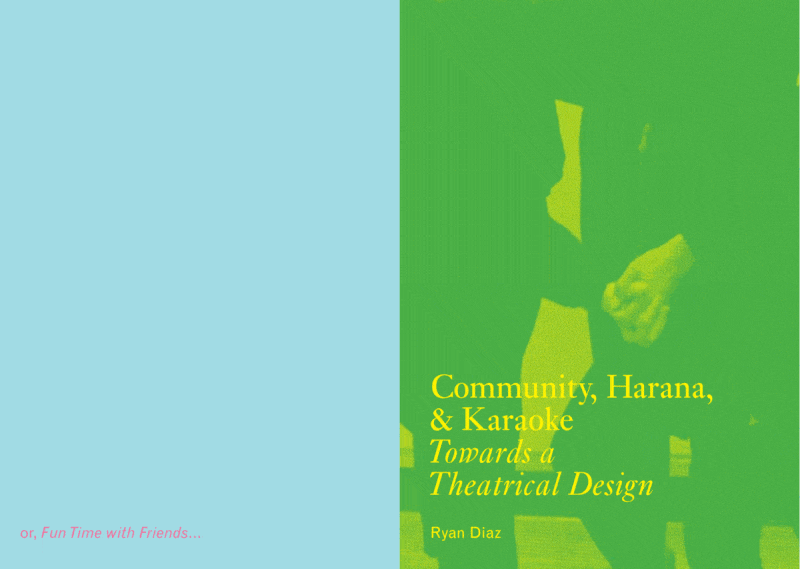
Community, Harana, & Karaoke: Towards a Theatrical Design
Ryan Diaz
Primary Advisor:
Research, Writing, & Thesis Book (192-pages)
Ryan’s Abstract:
An excerpt is included below.
Please view Ryan’s thesis book and writing : here.
Research, Writing, & Thesis Book (192-pages)
Ryan’s Abstract:
Community, Harana, & Karaoke: Towards a Theatrical Design explores graphic design’s potential as theatrical staging for building community and practicing the difficult and complicated art of loving others through performance.
Studying graphic design as harana, the traditional Filipino custom of romantic serenade, offers a framework to view both mediums as social architectures that propose and transform proximities of relation between people. As in harana, graphic design facilitates in naming, grounding, and organizing social relationships; in taking these affective environments as content and form, both arts align with the nature of performance and staging. Through practice, research, and abstraction, the graphic designer and the haranista possess the capacity to bring people together across space and time. Lessons learned in karaoke further extend these ideas to democratize and amplify the performative nature of graphic design as harana, in addition to modeling role play and collaborative social engagement. Karaoke and graphic design compel dialogical, communal, and collaborative performances for experimenting with conceptions of identity, and incentivize mutual co-dependence. These dynamics mirror the structure of rehearsal.
Community, Harana, & Karaoke imagines a theatrical design in open rehearsal, where failure is safe to pursue. Theatrical design is messy, fluid, and earnest. Its simulations permit access to so much more than what is immediately available under present conditions. This methodology creates zones for processing feelings by designing the scaffolding that supports emotional immersion and social connection. Theatrical design constructs a space for us to imagine the world as it could be, all the while providing a framework for criticality within pedagogies of intimacy, truth, and love.
Studying graphic design as harana, the traditional Filipino custom of romantic serenade, offers a framework to view both mediums as social architectures that propose and transform proximities of relation between people. As in harana, graphic design facilitates in naming, grounding, and organizing social relationships; in taking these affective environments as content and form, both arts align with the nature of performance and staging. Through practice, research, and abstraction, the graphic designer and the haranista possess the capacity to bring people together across space and time. Lessons learned in karaoke further extend these ideas to democratize and amplify the performative nature of graphic design as harana, in addition to modeling role play and collaborative social engagement. Karaoke and graphic design compel dialogical, communal, and collaborative performances for experimenting with conceptions of identity, and incentivize mutual co-dependence. These dynamics mirror the structure of rehearsal.
Community, Harana, & Karaoke imagines a theatrical design in open rehearsal, where failure is safe to pursue. Theatrical design is messy, fluid, and earnest. Its simulations permit access to so much more than what is immediately available under present conditions. This methodology creates zones for processing feelings by designing the scaffolding that supports emotional immersion and social connection. Theatrical design constructs a space for us to imagine the world as it could be, all the while providing a framework for criticality within pedagogies of intimacy, truth, and love.
An excerpt is included below.
Please view Ryan’s thesis book and writing : here.


